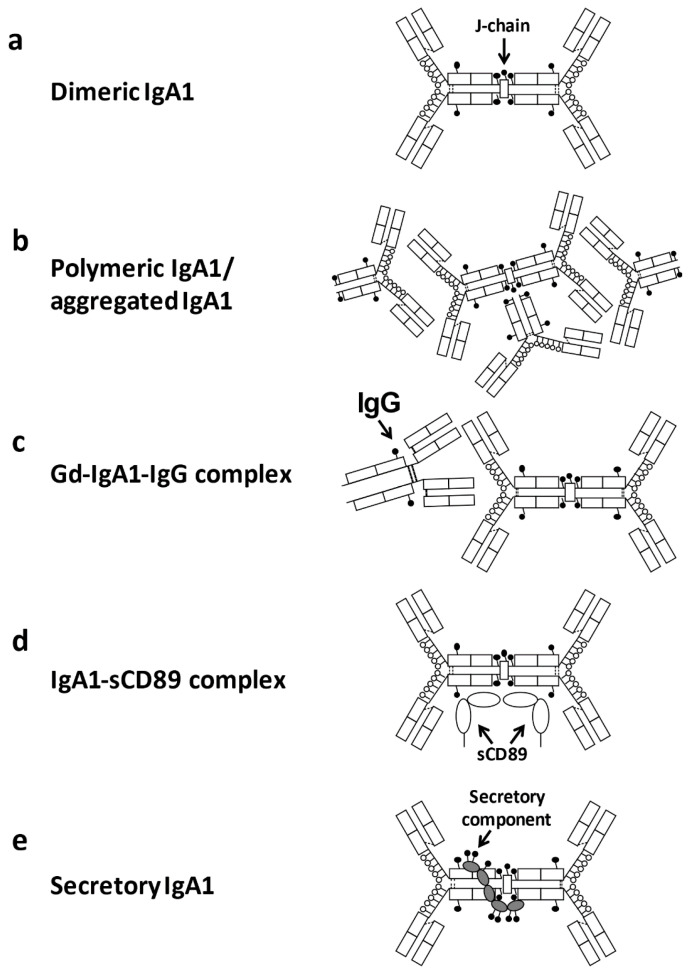Figure 4.
Macromolecular forms of IgA1. Although mesangially deposited IgA1 has not been fully characterized, Gd-IgA1-IgG (or IgA) immune complexes, IgA-IgA receptor complexes, self-aggregated IgA1 proteins, other serum protein complexes with IgA1, and secretory IgA1 are possible forms in the kidney deposits [23]. Dimeric IgA1 is composed of two monomeric IgA1 connected by joining chain (J chain) (a). Larger molecular forms of IgA1 may include complexes/aggregates of dimeric IgA1 and monomeric IgA1. Aberrantly glycosylated IgA1 may be prone to aggregation [127]. (b). Incomplete galactosylation of O-glycans in the IgA1 hinge region results in the exposure of terminal GalNAc and is recognized by autoantibodies (IgG of IgA), leading to the formation of IgA1-containing immune complexes (c). IgA1 complexes with soluble CD89 (sCD89) may be formed from CD89 cleaved from the surface of monocytes/macrophages (d). Secretory IgA1 consists of dimeric IgA1 with J chain and the secretory component (e). These macromolecular IgA1 forms (a–e) can form complexes with other serum proteins.

